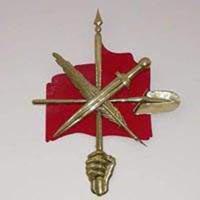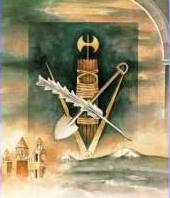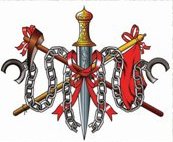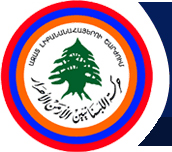
 |
 |
 |
 |
Azad-Hye Special
Since the formation of modern Lebanon, the Armenians in Lebanon were not part of any direct political alliance or coalition. For this reason, they were frequently considered as neutral or without political alignment. This has not always been as risk-free as it may seem, especially during times of crisis (such as the Civil War), when not having a backup support meant in reality to be targeted by two or more adversaries at the same time.
The upcoming parliamentarian elections in Lebanon (07 June 2009) have created an awkward situation, a kind of dilemma for the Lebanese Armenians. The highly polarized and antagonistic political situation in the country (between the March 8 and March 14 alliances) is dragging also the Armenians into its web.
At the last legislative elections in May and June 2005, the March 14 alliance (Led by Saad Hariri, president of the Future Movement, Samir Geagea president of the Lebanese Forces, Amine Jemayel, president of the Lebanese Phalanges and Walid Jumblatt, leader of the Progressive Socialist Party) turned to be the dominant group in the Parliament, with 72 Members out of 128. Two MPs affiliated to the March 14 alliance belong to the Armenian Ramgavar and Hunchak parties, in addition to 2 other ?independent? Armenian MPs.
The opposing March 8 alliance is a coalition of various political parties in Lebanon including Hezbollah, Amal Movement, Marada Movement, Lebanese Communist Party and the Syrian Social Nationalist Party. In 2006, the Free Patriotic Movement (Led by Michel Aoun) joined this alliance after signing a Memorandum of Understanding with Hezbollah. Two MPs in this alliance belong to the ARF (Tashnagtsoutyoun) party. In March 2008 Michel Murr (who has always been an ally to the Armenians) and his bloc quit the alliance, causing some tension within the Armenian voting ranks. The ARF has now allied itself with Hezbollah and the Free Patriotic Movement of General Michel Aoun, at the same time maintaining links with Michel Murr (as a person and not as bloc).
During the first week of April 2009, Hagop Pakradounian of the ARF became the first Lebanese MP to win a parliamentary seat in 2009, after winning the Matn district seat uncontested, following the withdrawal of rival candidate Nazaret Sabounjian.
The sharp divisions between the above-mentioned two alliances have created a new reality for the Armenians and especially for the ARF, who represents 70-75% of the community in Lebanon. It has forced them out of their traditional neutrality.
The involvement has reached to the point that Lebanese Armenians in Diaspora, from Kuwait to UAE, from Canada to France are called upon to participate in the elections, with all the travel expenses from abroad to Lebanon undertaken by the Armenian political parties, exactly in the same way the Lebanese parties try to allure their supporters.
In the wake of the Lebanese elections, some politically motivated pens are questioning the nature of the loyalty of the Lebanese Armenians and the political motivations of the leading ARF party.
Hagop Pakradounian rejects any accusation of duality of allegiance (Armenian versus Lebanese). In an interview with the Arabic daily Asharq Alawsat (17 April 2009) he says: ?We are one of the sects that form the Lebanese pluralism. We are members of the Armenian Church, so we are Lebanese Armenians. There is no contradiction in being Armenian and Lebanese. We hold Lebanese citizenship and not Armenian. That is the basic characteristic. We are all for abolishing political sectarianism in Lebanon. We might then assume high-ranking positions.?
Regarding the international affiliations of the party, ARF is clear about it. The party is an international one headed by Hrant Markarian, who holds Armenian citizenship, even though he was born in Iran. The party has branches in many countries, while the central committee (bureau) convenes in a general conference once every four years to discuss common Armenian issues and not internal political issues related to each branch. In conclusion, there is no intervention whatsoever from the party?s central committee in the internal affairs of Lebanon or any other country.
ARF has its own internal challenges, such as the Free Lebanese Armenian Movement, founded two years ago by several displeased ex-ARF members, headed by General Nareg Aprahamian. The Movement is said to be supported by the Future Movement (Saad Hariri), with the aim of weakening the voting power of the ARF. In May 2008, the radio station of the Movement (Radio Sevan) was burned during a Hezbollah raid on Beirut suburbs (Hezbollah is perceived as an ally to ARF). In January 2009, one of the founding members of the Movement (Hrag Akian) was heavily wounded and paralyzed by a shot fired by ARF supporter in Bourdj Hammoud?s Amanos neighborhood, during a heated encounter. On 06 April 2009 General Nareg Aprahamian announced his candidacy for the Armenian seat in the city of Zahle, heralding a fierce confrontation on that seat with ARF.
The situation inside the Ramgavar party is critical. A group of members have formed a sort of inner opposition to the leader Hagop Kassarjian and Avedis Dakessian, the deputy-chairman. Kassarjian, who had managed to gain one of the Armenian seats in the 2000 and 2005 elections though his affiliation to the Future Movement (Hariri clan), might eventually lose support for the same position. Ramgavar opposition circles claim that Kassarjian and Dakessian have orchestrated an illegal general meeting on 29 March 2009, with the sole aim of consolidating their positions in the June elections.
Armenians have been always careful not to fall into alliances during Lebanese crisis. They have always served as an element of balance and stability. The community nowadays is witnessing political and cultural diversity, manifested in the numerous parties and trends. This in a way is bringing fresh air to the society. On the other hand, the Armenian votes could easily be exploited, in a political culture, that favors blind party comradeship and a traditionally introvert society governed by semi-authoritarian normes.
It is obvious that, the political options of the Lebanese Armenian are now divided between March 8 and 14 Alliances. Would they be able to achieve a common ?Armenian Bloc?, despite their differences? Would they succeed at least to enjoy a sort of harmony within the community itself? Would they still be able (on pan-Lebanese level) to play a certain balancing role? Or would they be strongly influenced by the acute polarization in the Lebanese political scene?
Last year was the 50th anniversary of the inter-Armenian killings of the 1958 in Beirut, when the political polarization in the Cold War era Lebanon led to the death of at least a hundred Armenians in an internal strife. The Lebanese Armenians preferred to keep the taboo intact and did not even pray for the souls of those lost in tragic circumstances. While it is highly unlikely that a physical lose could inflict the Armenians in the same manner that happened in the past, the prospect of being manipulated as proxies in hostile camps remains real.

In January 2009, Hrag Akian, one of the founding members of the Free Lebanese Armenian Movement, was paralyzed by a shot fired in front of the ARF club in Bourdj Hammoud.
Akian was warned not to pass with his car in front of ARF club, but he did not take the warning seriously.
As he was spotted again in a car in front of the ARF club, together with a friend, ARF members immediately opened fire on him. A bullet ruptured his spinal cord and he lost control on the car and hit a parked car.
Akian was seriously wounded and paralyzed. His friend, who was casually wounded, was hit by the back of a gun and lost consciousness. ARF members and followers immediately switched off the mobiles in the damaged car in order to prevent any help arriving from Akian's followers. Not doing so would have caused a slaughter in the Armenian neighborhood.
Akian was then transferred to the hospital for aid. He is under physiotherapy and will be moved to Germany for further treatment, but the doctors do not hope much.
Akian was a known ARF leader in Miami, Florida, where his family jewelry business is based. He was in Beirut since October 2008, when business started to get slow in the USA. He got involved in the Free Lebanese Armenian Movement, which counts now about 3000 thousand followers in the Armenian community (500 according to ARF sources), majority ex-ARF believers.
The Free Lebanese Armenian Movement is accused to be funded by known the Lebanese tycoon Saad Hariri (Sunni Muslim) in order to weaken ARF.
In the Lebanese Armenian community it is believed that this movement will lose its momentum and support if it fails in the 7th June Lebanese Parliament elections, because it will not be able to justify the future financial support and backing of the Hariri clan.
General Nareg Aprahamian, the head of the Movement has declared his candidacy to the Lebanese Parliament from the Zahle city's seat.
Since I am not Lebanese and never been to Lebanon, it is really SAD to read about the Armenians in Lebanon. I thought always the Armenians stand together although they need to have their difference in political views without any violence. Are we not respecting DEMOCRACY?
My name is Garo and I am from Holland. I like to be informed about news related to Armenians every where. Thank you for all the good news. Շատ բարեւներ բոլորին. Great regards.